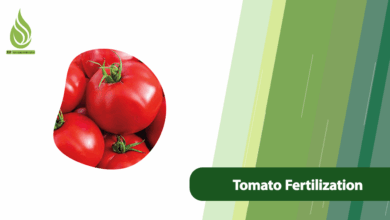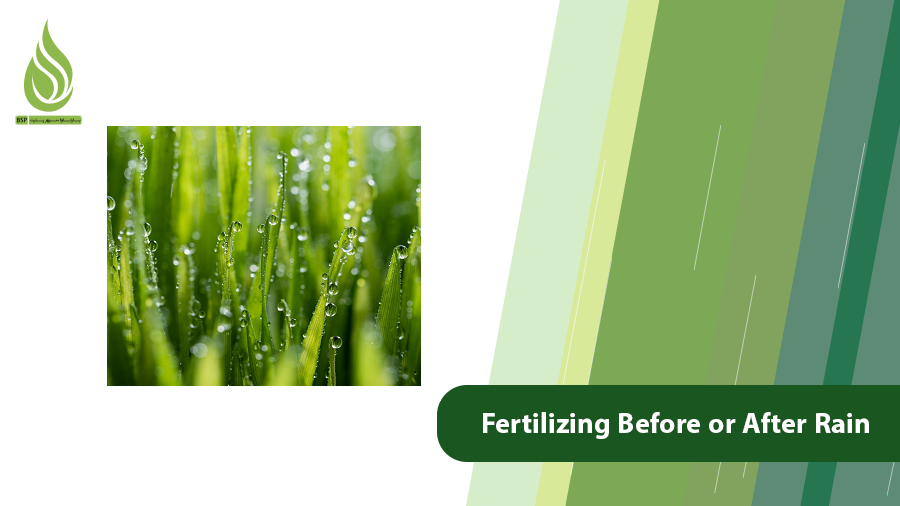
Fertilizing Before or After Rain: Which Is Better?
Choosing the right time to fertilize is one of the most critical decisions in farming and gardening. A common question among farmers is whether fertilizing before is better or after rain is better. The answer depends on the type of fertilizer, soil conditions, and the climate of your region. If fertilization isn’t timed correctly, some of the fertilizer may go to waste, or plants may not absorb it effectively. Proper timing can significantly boost crop yields and plant health.
How Rainfall Affects Fertilizer Management
Fertilization is a vital step in gardening and agriculture, promoting plant growth and vitality. However, the type and amount of fertilizer aren’t the only factors that determine success; timing plays a huge role in how effective the fertilizer will be.
The most significant factor in timing fertilization is the local climate. In areas with frequent rainfall, careful management is needed to prevent nutrients from washing away. Farmers must adjust their fertilization schedules based on the region’s weather patterns and rainfall forecasts. So, should you fertilize before or after rain? To answer this, let’s first explore the main methods of applying chemical fertilizers:
- Liquid fertilizers (applied through foliar spraying or irrigation).
- Surface broadcasting (spreading fertilizer evenly over the soil surface).
- Deep application methods (such as burying fertilizer in trenches or mixing it into the soil).
The decision to fertilize before or after rain depends on which of these methods you’re using.
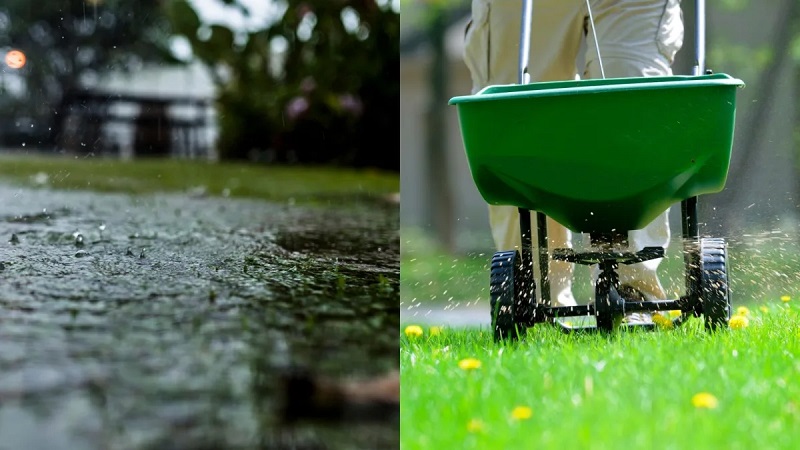
Note: If fertilizer is spread on the surface and heavy rain follows, a portion of it may wash away.
Pros and Cons of Fertilizing Before Rain
Many people believe fertilizing before rain is a mistake, but this isn’t always true. Fertilizing before rain can be beneficial for several reasons:
- Burying fertilizer before rain: If you’re using deep application methods like trenching or mixing fertilizer into the soil, doing so before rain is ideal. The subsequent rainfall helps dissolve the fertilizer and carry it to the plant roots.
- Better conditions for deep application: Deep or broadcast fertilization after rain can be challenging because wet, muddy soil makes it hard to incorporate fertilizer properly.
- Reduced nutrient loss: When fertilizer is buried or mixed into the soil, it’s less likely to be washed away by rain. In fact, rain can help release nutrients gradually, especially for fertilizers like phosphorus and potassium, which need moisture to dissolve effectively.
- Faster dissolution: Rain speeds up the process of dissolving granular fertilizers into the soil, a key advantage of these products.
- Deeper nutrient penetration: Rainfall can carry fertilizer nutrients to deeper soil layers, where plant roots can access them.
These are the advantages of fertilizing before rain. However, in some cases, fertilizing before rain isn’t advisable. For instance, when using liquid fertilizers or fertigation (applying fertilizer through irrigation), rain can wash away much of the fertilizer, making it unavailable to plant roots. This not only wastes resources but can also harm the environment. If heavy rain is expected, the fertilizer may be quickly swept away, leaving plants undernourished. To avoid this, check the weather forecast and ensure no rain is expected within 24 hours when using liquid fertilizers.
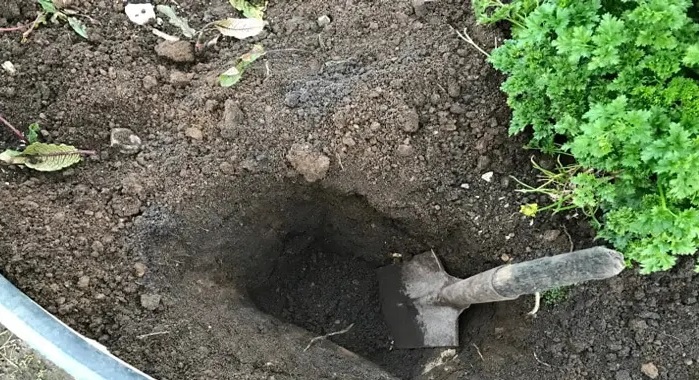
Note: When fertilizer is buried, subsequent rainfall won’t wash it away and may even help release nutrients gradually.
Pros and Cons of Fertilizing After Rain
If you’re using liquid fertilizers or water-soluble fertilizers (like crystalline or powdered forms), it’s often best to wait until after rain to apply them. Applying these fertilizers before rain can lead to nutrient loss, as the rain may wash away most of the nutrients. To avoid this, check the weather forecast to ensure no rain is expected for at least 24 hours after application. If you’re using liquid fertilizers, fertilizing after rain, or ensuring no rain is forecast for 24–48 hours, is the safest approach.
The benefits of fertilizing after rain include:
- Moist soil for better absorption: Wet soil helps plant roots absorb fertilizer more effectively.
- Reduced risk of nutrient loss: If the soil is already moist from rain, the fertilizer dissolves well and is less likely to wash away.
- Activation of soil microorganisms: Rain activates beneficial soil microbes, which help break down and absorb fertilizers more efficiently.
- Improved fertilizer efficiency: Fertilizing after rain reduces nutrient loss, ensuring plants get more of the nutrients they need. This leads to better plant nutrition and higher yields.
- Cost savings: By minimizing nutrient loss, farmers need less fertilizer, reducing costs.
- Water conservation: Fertilizing after rain reduces the need for additional irrigation to dissolve the fertilizer, saving water.
- Faster dissolution: In moist soil, nitrogen-based fertilizers like ammonium sulfate dissolve quickly and are readily absorbed by plants, making post-rain application highly effective.
- Cleaner leaves for foliar application: Rain washes dust and debris from plant leaves, improving the absorption of foliar-applied fertilizers.
However, fertilizing after rain has a few minor drawbacks:
- Need for adequate rain: If the rain is too light, the soil may not be moist enough for the fertilizer to dissolve properly.
- Delayed fertilization: Waiting for rain might cause you to miss the optimal time for fertilizing.
- Soil compaction: In some cases, heavy rain can compact the soil surface, hindering fertilizer penetration.
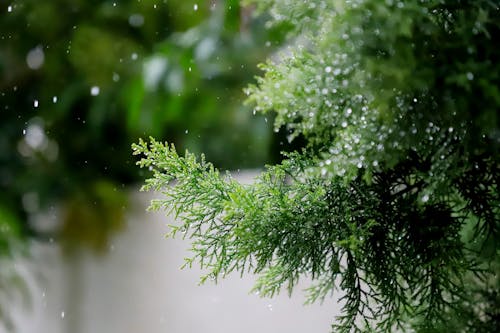
Note: Light rain can help fertilizer penetrate the soil while preventing surface evaporation.
Factors Influencing Fertilization Timing
Type of Fertilizer
- Granular fertilizers: Fertilizing before light rain can help granular fertilizers dissolve gradually.
- Liquid fertilizers: These are best applied after rain for quick absorption.
- Powdered fertilizers: These can be used before rain, but they must be evenly distributed in the soil to avoid clumping.
Soil Type
- Sandy soils: These drain water quickly, so fertilizing after rain is recommended to ensure nutrients stay in the soil.
- Clay soils: These retain water well, so fertilizing before rain can be effective, as the soil will hold onto the nutrients.
Plant Type
- Plants with shallow roots: Fertilizing after light rain is ideal, as nutrients stay closer to the surface where these roots can access them.
- Plants with deep roots: Fertilizing before rain can help nutrients penetrate deeper soil layers, where deep roots can reach them.
Weather Conditions
- Light rain: Fertilizing before or after light rain can be beneficial, depending on the fertilizer type.
- Heavy rain: Avoid fertilizing before heavy rain, as it can wash away nutrients. Wait until the soil dries slightly after heavy rain before applying fertilizer.
Note: In heavy rain conditions, it’s best to avoid fertilizing or wait until the soil dries out slightly after the rain.
Golden Tips to Prevent Fertilizer Loss During the Rainy Season
- Always check the weather forecast to determine the best time for fertilization. Unplanned fertilization is one of the most common fertilization mistakes farmers make.
- Apply foliar fertilizers after rain, not before.
- For trees, use deep application methods like trenching instead of surface broadcasting. Trenching places fertilizer near the roots, reducing waste.
- For phosphorus and potassium fertilizers, apply before rain to aid dissolution and soil penetration.
- For nitrogen-based or liquid fertilizers, apply after rain for better results.
- For sensitive crops, use slow-release fertilizers. These release nutrients gradually, reducing the risk of washout. Granular ammonium sulfate is a good example of a slow-release nitrogen source.
- Use mulching to retain soil moisture and reduce nutrient leaching.
- If heavy rain is expected, wait 24–48 hours for plant leaves to dry before applying foliar fertilizers.
- The best time to fertilize after rain is the morning after, when the soil is moist but not waterlogged.
- Use high-quality fertilizers to ensure maximum effectiveness.
- In hot, dry climates, fertilizing after rain is especially important, as moist soil enhances fertilizer absorption time.
Conclusion
Fertilizing before or after rain can both yield good results, provided the method aligns with the fertilizer type, soil conditions, and plant needs. The best choice depends on the fertilizer’s properties, how quickly it dissolves, and the soil’s characteristics.
For buried fertilizers (e.g., trenching, banding, or spot application), fertilizing before rain is the best option. However, for surface-applied or foliar fertilizers, post-rain application is more effective, as moist soil and roots are primed to absorb nutrients.
Fertilize Before Rain:
- Phosphorus-based fertilizers
- Potassium-based fertilizers
- Fertilizers that need to be buried in the soil
Explanation: These fertilizers benefit from rain, which helps dissolve and distribute them in the soil.
Fertilize After Rain:
- Liquid fertilizers
- Surface-applied fertilizers
Explanation: These fertilizers dissolve quickly after rain, allowing plants to absorb them rapidly.
